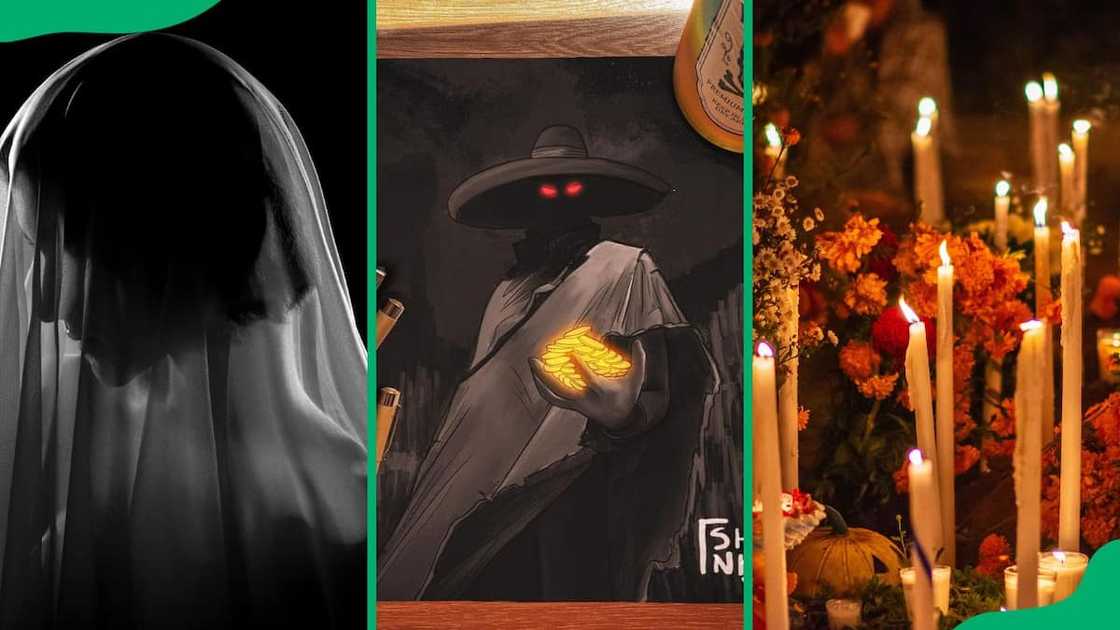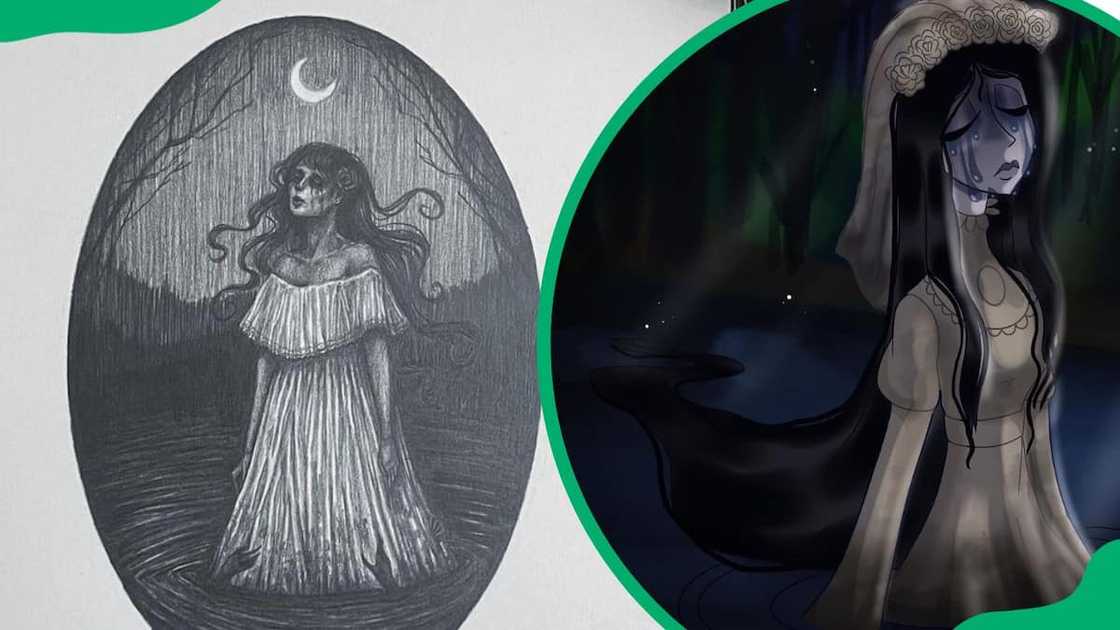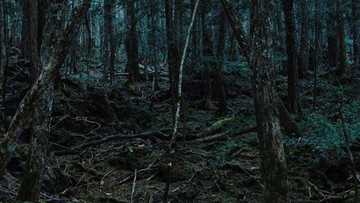12 Mexican urban legends and myths that are more interesting than most movies
Even if you do not believe in supernatural phenomena, there is some thrill in being shaken up by good old-fashioned scary stories and myths. These tales often originate from local history and popular culture and are passed on from generation to generation. Like most countries, Mexican urban legends include some of the most horrific tales guaranteed to keep you up at night.

Source: UGC
Mexican urban legends extend the country’s heritage and cultural pride. Although they are sometimes ultra-frightening, you may find them more interesting than films.
Interesting Mexican urban legends
Mexico is a country located South of the North American continent. It is popularly known for its beaches, tequila production and ancient Mayan ruins. However, besides these, did you know that the country is also known for myths and legends?
From the tales of a weeping lady to that of an island of dolls, here is a compilation of some of the most spine-chilling Mexican folk tales you ever heard.
1. The legend of La Llorona

Source: UGC
The story of The Weeping Woman or The Wailer is one of the most well-known terrifying tales in Mexico. Maria, a beautiful lady, married a rich and handsome man with whom she had two kids.
Unfortunately, their marriage hit the rocks after some time, and the husband started spending less time at home. He only paid attention to the children whenever he was in the house. One day, Maria finds her husband with another lady and loses her mind.
Angry, she drowns her kids, killing them on the spot. After realizing what had happened, Maria cries out for her children and drowns herself too. However, her spirit is caught on Earth, where she searches for her kids endlessly along waterfronts.
The story transforms from the tale of a mourning lady to the cause of jumpy walks along rivers when it adds this: If La Llorona cannot find her kids, she will grab any she finds.
Is La Llorona a true story? No, it is not. The tale is an urban Mexican myth often used to scare disrespectful kids.
Why did La Llorona drown her kids? She drowned her kids because she was jealous of the attention they were getting from their dad. Another reason was the frustration she had after finding out about her husband’s extramarital affair.
2. La Nahuala

Source: UGC
A grandmother lives with his two grandkids, Leo and Nando. The latter used to tell his brother tales about a witch the townspeople called La Nahuala, who lived in an abandoned mansion.
It is there, Nando said, that she trapped the souls of two girls who went missing during the 18th century. The witch was preparing to acquire another pure soul to gain power and wipe out all the townspeople.
On a fateful day, Nando enters the mansion, hoping to prove his bravery, but never comes out. To save him, Leo and his grandmother ran into the house. After facing skeletons, ghosts and scary voices, Leo saves his brother’s soul.
3. The Puebla Tunnels

Source: UGC
The Puebla Tunnels are a mysterious system of tunnels under the Mexican city of Puebla. Although no such tunnels were found after hundreds of years of search, they were rediscovered in 2015.
They are believed to be up to 500 years old, extending for more than 10 kilometres. The tunnels are high enough that a person could easily ride through on horseback.
4. El Hombre del Sombrerón

Source: UGC
This Chiapas legend narrates the story of a man in a big black hat. He is described as a tall, stocky gentleman wearing an elegant suit with gold buttons and huge boots with silver spurs. No person has ever seen his face as the enormous hat covers it.
He is known to seduce women and capture the souls of people who damage the area’s ambience. It is believed that the man causes extreme pain in his victims, causing them to be immobile. He also leaves them speechless as he instils an indescribable fear and a sense of anguish.
5. El Charro Négro

Source: UGC
El Charro Négro’s tale is that of a poor but greedy man. He sells his soul to the Devil for wealth. The man, however, flees after discovering that his friends are only there for his money. He rides away from town, dressed in an elegant black Charro suit and hat, with a single bag full of cash.
Later, the Devil catches up with him and captures his soul. El Charro, also known as the Phantom Rider, wonders the world, looking to offer people wealth in exchange for their souls.
6. The Woman in Black

Source: UGC
In 1951, a lady began appearing on the road leading to Real del Monte from Pachuca. She reportedly wears a long black dress with a veiled hat. She stops motorists driving past midnight, requesting them for a ride to a nearby cemetery.
Those who comply allege that she walks straight past the cemetery gates once there, causing the witnesses to flee. But if you refuse her request, she immediately vanishes.
7. La Isla de las Muñecas

Source: UGC
The Island of the Dolls has become a popular tourist attraction site on the canals of Xochimilco, towards the southern end of Mexico City. It is believed that the island’s previous owner, Julián Santana, once discovered the lifeless body of a young girl tangled in the water lilies growing in the canals.
Soon after, he started hearing voices calling out to him. Thinking he heard the girl asking for her doll back, he began hanging dolls everywhere to appease the girl’s soul.
8. La Pascualita

Source: UGC
At first glance, La Pascualita seems like an ordinary mannequin in a famous dress shop in Chihuahua, Mexico. However, it is rumoured that the dummy is the shop’s owner's daughter, who died on her wedding day due to a scorpion’s sting.
Stricken with grief, the mother embalmed her corpse, dressed her with the finest pieces and posed her on the window so that she would always be close to her. It is said that many brides come into the shop believing La Pascualita will bring them luck on their big day.
9. La Tisigua

Source: UGC
This urban tale emerges from the streets of Chiapas. La Tisigua approaches men swimming along the Sabinal River's shores. She entices those unlucky enough to see her by clapping her hands and calling them seductively by name. These unfortunate humans become speechless, losing their voice, mind, and spirit.
10. El Hombre Que No Respetó El Día de Muertos

Source: UGC
Once upon a time, a hardworking farmer decided to work all through the Day of the Dead. He completely disregarded the holiday’s sacred traditions. As he was in the fields, he heard voices asking for food and drink.
The man rushed into the house and asked his wife to make a meal as an offering to the dead. While waiting for the food to cook, he felt tired and decided to nap for a few minutes.
When the food was ready and his wife came to wake him up, she found him dead. News of this death spread throughout the land, and everyone knew the reason for the man’s death: you never disrespect the Day of the Dead.
11. La Planchada

Source: UGC
Widely recognized as The Ghostly Nurse, La Planchada is said to be the spirit of a nurse who tragically died during the Cristero War. She appears dressed as a nurse to assist sick patients. Nonetheless, her appearance serves as a symbol of death.
12. El Cucuy

Source: UGC
You may have heard of the bogeyman, but he is called El Cucuy in Mexico. What makes him scarier than the boogie monster is that he can be anybody. This urban myth is used chiefly as a bedtime story.
Mexican urban legends include some of the scariest myths ever originating from the country. So, turn off the light, grab a blanket and delve into these mysterious phenomena.
READ ALSO: 17 African folktale stories with moral lessons for children and parents
Briefly.co.za recently wrote an article about African folktale stories with moral lessons. These tales draw from everyday things like animals and plants, although they sometimes extend to the supernatural and involve beings like giants, spirits, and gods.
African folktale stories reveal life lessons, spiritual teachings, and cultural knowledge and wisdom for the African community and cultural heritage. Here is a look at very short folktales with morals.
Source: Briefly News








